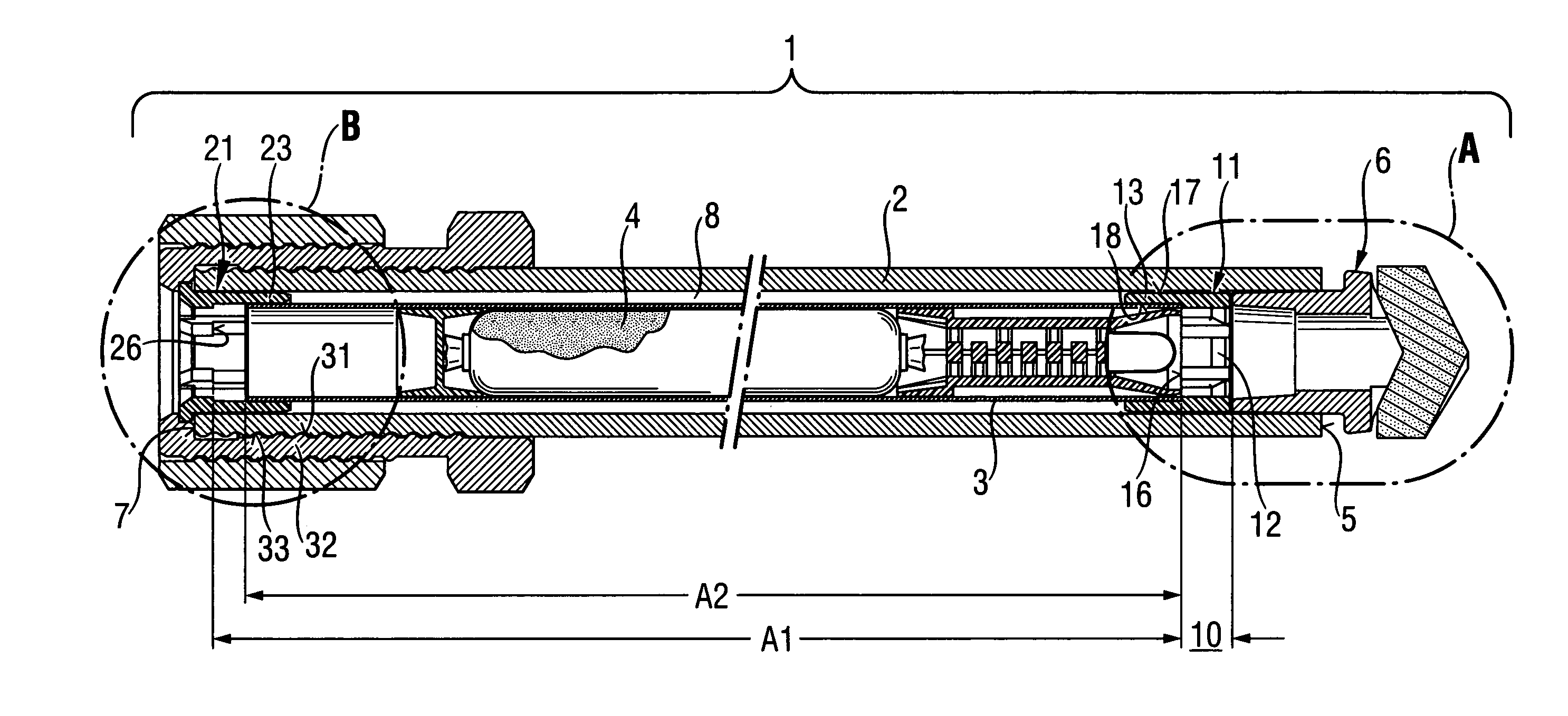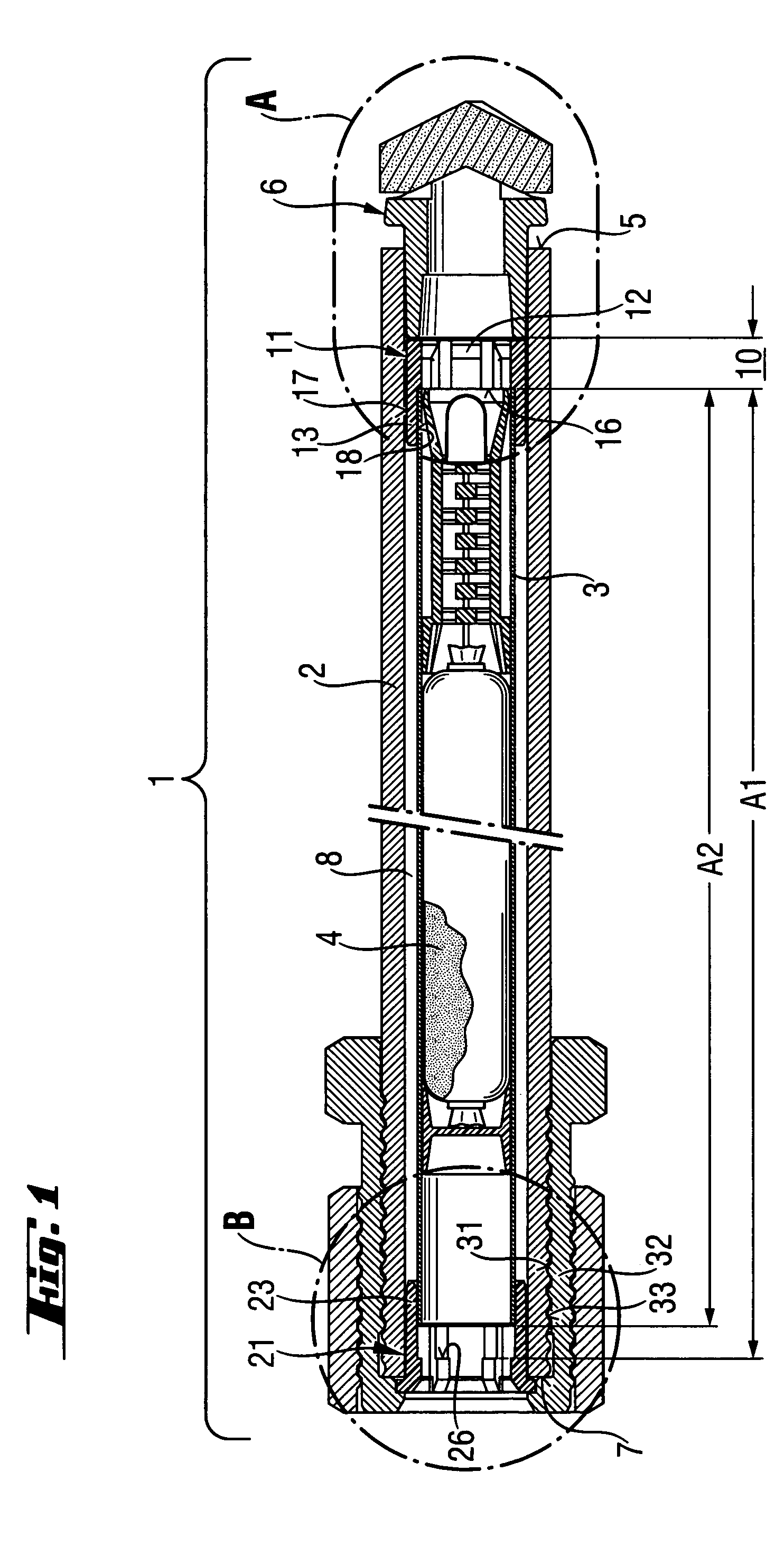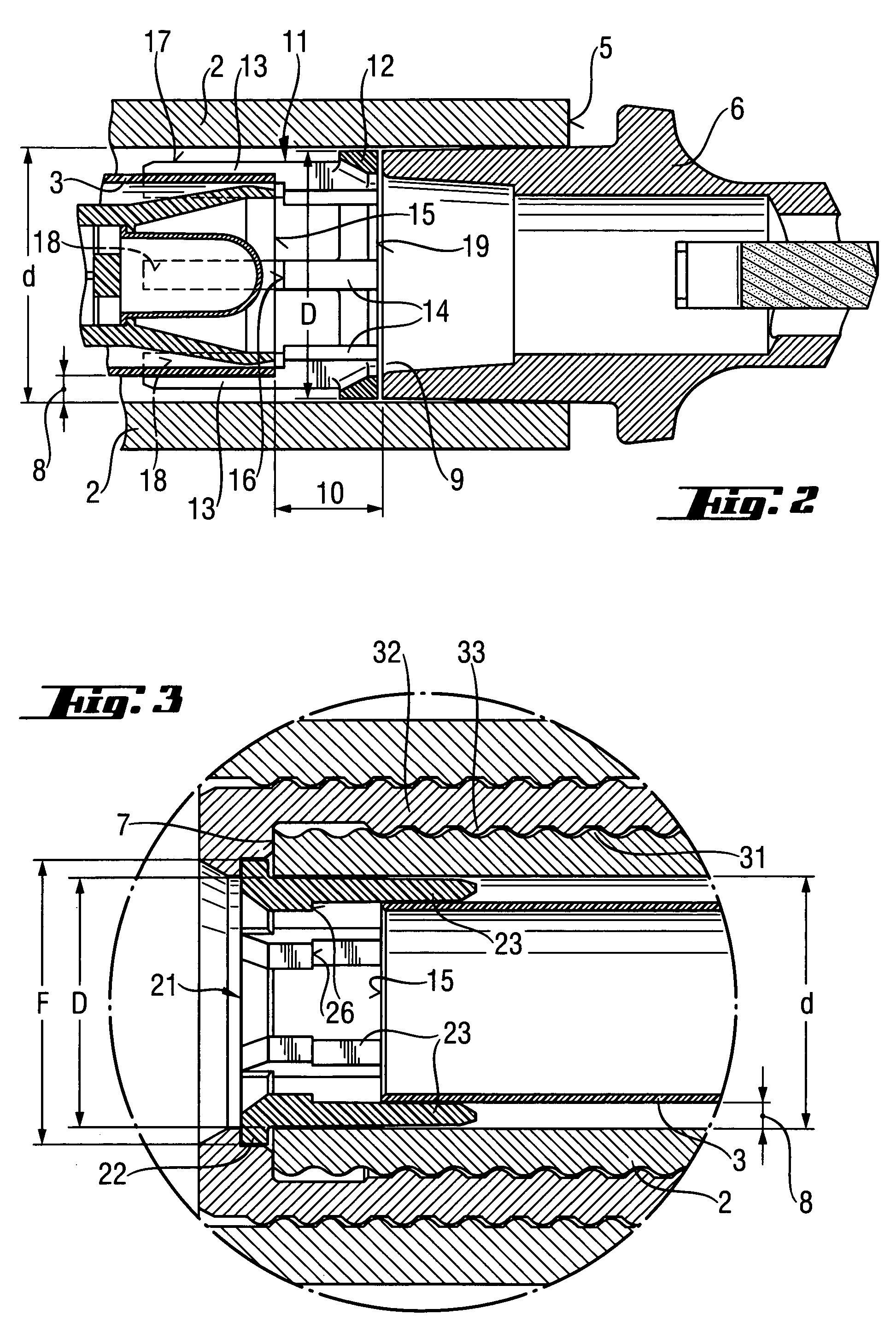Bonding anchor
a technology of anchors and retaining rods, applied in the field of anchors, can solve the problems of laborious setting operation, inability to perfect remove broken down and reduced stones using the prior art centering device, and inability to manufacture at least one centering element in large quantities
- Summary
- Abstract
- Description
- Claims
- Application Information
AI Technical Summary
Benefits of technology
Problems solved by technology
Method used
Image
Examples
Embodiment Construction
[0027]The anchor 1 is to be based in a region of a receiving material and is formed of an axially extending anchor tube 2 and an axially extending inner tube 3 arranged therein. A dispensable mass 4 packaged in a foil bag is arranged in the inner tube 3. The anchor tube 2 has a first leading end 5 with an incorporated drill head 6 and an opposite second trailing end 7. The inner tube 3 is radially and axially held by means of a centering assembly including a first centering means 11 and a second centering means 21.
[0028]The first centering means 11 according to FIG. 2 has a ring-shaped base part 12, whose outside diameter D corresponds approximately to the inside diameter d of the anchor tube 2. Six webs 13 extend axially from the base part 12, the webs are uniformly distributed around the periphery of the base part 12. The webs 13 each have a thickened part 14 for the creation of an axial stop surface 16 for the inner tube 3, which projects into the projection of the front and 15 o...
PUM
 Login to View More
Login to View More Abstract
Description
Claims
Application Information
 Login to View More
Login to View More - R&D
- Intellectual Property
- Life Sciences
- Materials
- Tech Scout
- Unparalleled Data Quality
- Higher Quality Content
- 60% Fewer Hallucinations
Browse by: Latest US Patents, China's latest patents, Technical Efficacy Thesaurus, Application Domain, Technology Topic, Popular Technical Reports.
© 2025 PatSnap. All rights reserved.Legal|Privacy policy|Modern Slavery Act Transparency Statement|Sitemap|About US| Contact US: help@patsnap.com



